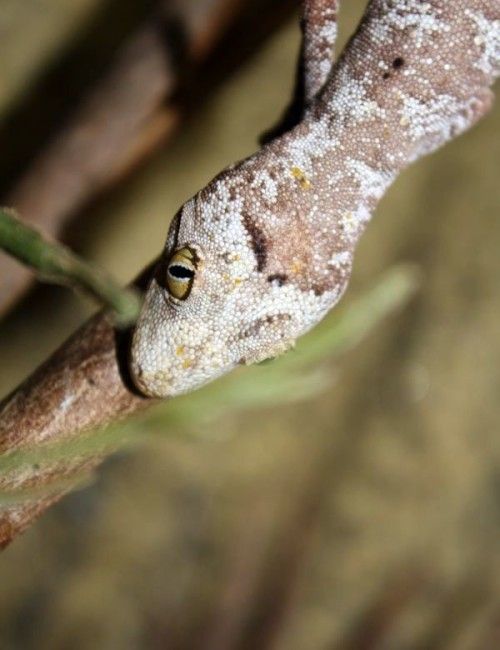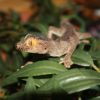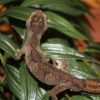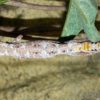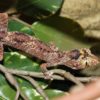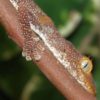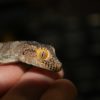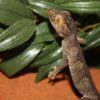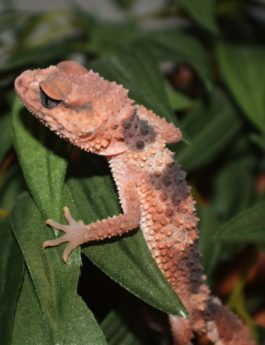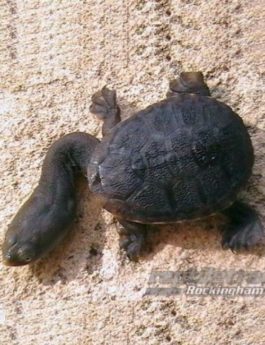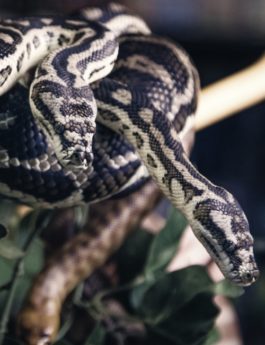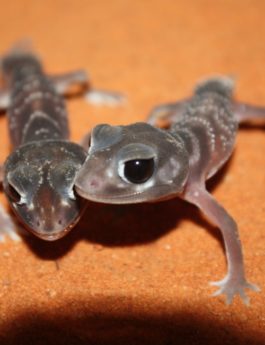| Common Name: | North-West Spiny Tailed Gecko |
| Scientific Name: | Strophurus ciliaris |
| Family: | Gekkonidae (Geckos) |
| Genus: | Strophurus |
| Status: | Category 2 |
| Size: | SVL 8.9 cm |
Large member of S. strophurus group with long spines over eye and on tail. Two subspecies recognised with additional undescribed subspecies in eastern Australia. S. c. ciliaris (Boulenger, 1885) Up to 4 spines may margin top of eye, and 2 behind eye. Dorsal tubercles usually low and arranged irregularly. Two rows of long orange and/or black spines commence on base of tail, becoming shorter towards tip. Iris greyish white to brownish orange, margined with orange or white and enclosing a fine black reticulum. Mouth-lining brownish yellow to dull orange. Ground colour shades of grey to brownish grey.
Shelters beneath bark, in hollow timber, on the stems and branches of trees and shrubs and in hummock grasses. S. c. ciliaris extends through subhumid and humid northern Australia, from north and north-eastern Kimberley region of WA, to northern NT. S. c. aberrans occurs in semi-arid to arid regions dominated by shrublands and low woodlands on red sandy soils. Extends from south-western Kimberley region to North West Cape and south to Lake Yeo, WA, then inland to Central Australia. The taxonomic status of populations in northern SA, western Qld and western NSW is unresolved.
Terrarium: Northern Spiny-Tail geckos are an arboreal species, meaning they have great climbing abilities that need to be catered to. An enclosure with height for them to feel as if they’re far enough away from the ground, while also still providing enough ground space for them to catch their food is important. A terrarium measuring 45x45x60 (WxDxH) is appropriate to house up to four adults in.
Lighting and Heating: Naturally, Northern Spiny-Tail Geckos will be out in small shrubs and trees basking during the day, exposing them to natural sunlight. UVB lighting is important to provide, alongside a daytime heat lamp. You want to have a day time basking hot spot temperature of 35°C with it dropping down to 25°C in the cool end. To monitor the temperatures inside the enclosure a thermometer should always be used. A heat rock can be used to provide tummy heat.
Furnishings: branches and vines can be used to create an elevated basking spot. Artificial foliage throughout the enclosure will allow the Northern Spiny-Tail Geckos plenty of hiding spots and coverage, a water bowl placed in the cool end, and red sand kept at the correct moister is our recommended substrate.
Food in captivity: Northern Spiny-Tail Geckos are insectivores, feeding on appropriate sized crickets and woodies. Food items will need to be dusted with calcium and vitamin supplements.
The essentials:
- Terrarium of appropriate size
- UVB lighting
- Daytime basking globe
- Thermometer
- Water bowl
- Substrate
- Hide caves
- Branches and vines
- Foliage for shelter
- Calcium and vitamin supplements

